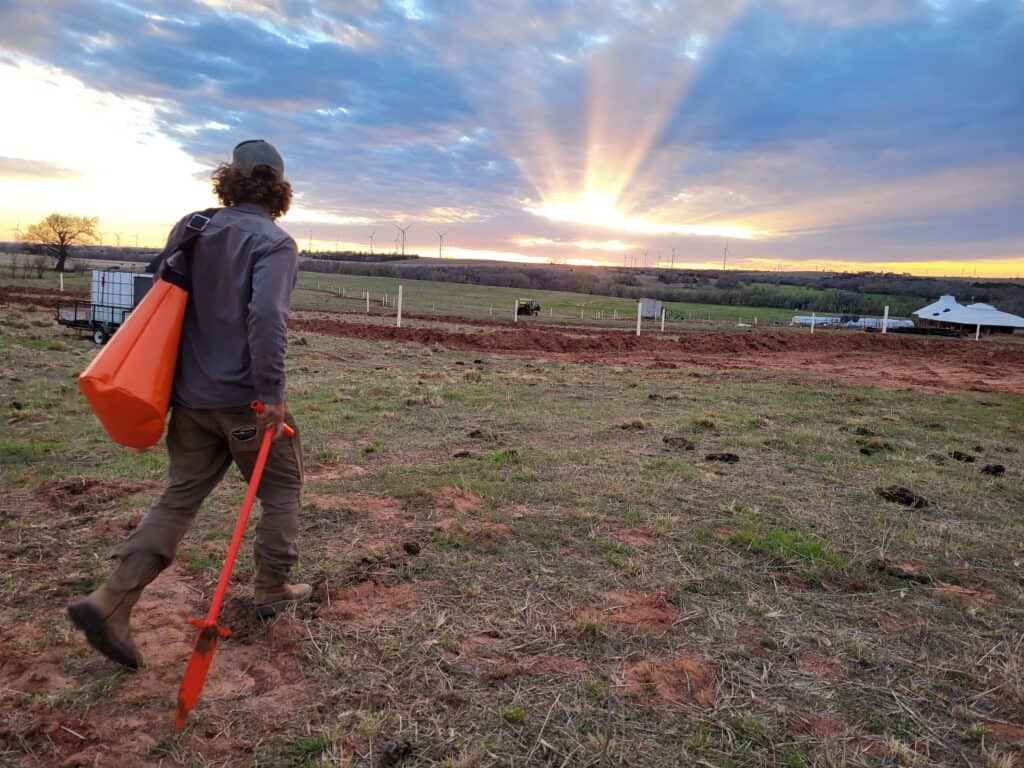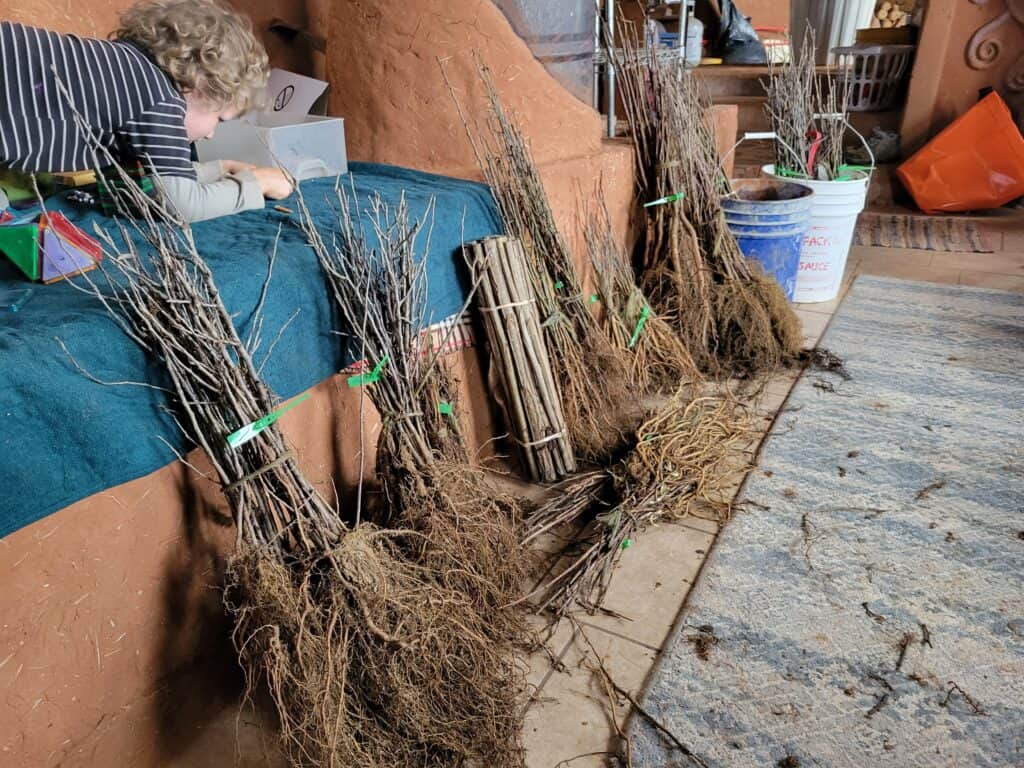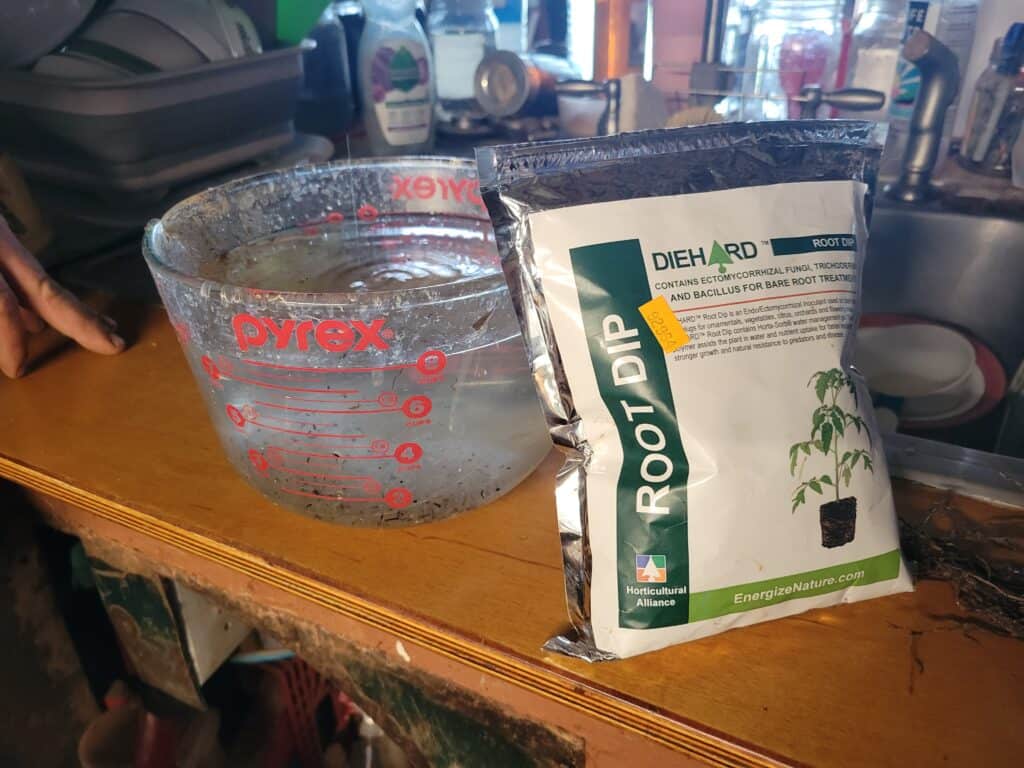March of 2024 was all over the place in terms of weather. We have not had to use the rocket-mass heater at all this month. Sometimes I think we’ve just gotten used to the chilly nights and cool mornings. We have had some much needed rain periodically, and a few warm days here and there. Perfect for our annual local music festival at Medicine Park: Parkstomp. If I’m not mistaken, this was our 7th time stompin’ our feet at this free music festival. Other than that, we’ve been knee-deep in our latest project: #foodforestnow, which I will explain.
New Facebook Page!
Remember how our Facebook page, Earthbag Build Oklahoma, got hijacked? Some sources say not to create a new page because it makes it harder for Facebook to recover the old page. Well. after several e-mails directly to Facebook, reporting the page, flagging the page, and asking others to do so, Facebook doesn’t seem to be prioritizing our humble little earthbag page. According to Google, 300,000 Facebook pages are hacked everyday. So, we started a new page. This time, it’s called HOME Farm, and will include a lot more than just Earthbag building stuff. Hop on over there and start following the page.
Trees Trees and More Trees
We’ve begun a massive tree-planting project! We’re planting 1,150 trees! If you’ve been reading the blog for any amount of time, you know that we have planted many trees in the past. We’ve tried small seedlings from The Arbor Day Foundation (who send us what seems like a tree’s worth of junk mail following the trees). We’ve planted much larger fruit trees from Wal-Mart in the Spring. And, we’ve tried large trees from nurseries (the most expensive route). And we’ve tried trees from seed in the hoophouse. Many times, the trees get started with great potential, but eventually succumb to predation by pesky grasshoppers, lack of adequate water, moles digging and eating their roots underground, or competition from native grasses. Read about the effort we put into planting a single Mother’s Day tree back in 2016 here. The one tree that has stood the test of time is the Catalpa I transplanted into a draw from down by the creek. I believe it was planted in 2018, and has come back every year since, but it is very slow growing.
This year we’re doing it different. We’re implementing the food forest, or guild concept for tree planting. Aaron found a grant from Contour Lines Corp, a non-profit organization that has assisted famers and villagers to plant over 2.2 million trees worldwide. They have planted over 12,000 agroforestry sites in Guatemala, Honduras, and 12 states in the US. All of their projects use the restorative agriculture practice of planting on contour lines or swales. We’ve introduced you to swales in the past. Swales built on contour help retain rainwater and ponding, allowing it to percolate down slowly, instead of running off. Plants and trees grown on swales on contour are more moist than those grown in ditches or on flat sloping land.
Making Swales
Overyeild is a project development company with a software program that allows farmers and agroforestry nerds to map out and plan food production spatially, and through time. It allows us to use GIS imagery, USGS contour line maps, and soil web maps data to overlay all that data to our agroforestry plan. The software team and consultants have been very helpful in our work on this project. However, I have to give “mad props” to my brilliant partner for figuring out how to use this software. The team, when reviewing our plan, were very impressed with how much he had done on his own.
With our trusty transit, Overyeild software, and landscaping flags, we marked out contour lines across the landscape around our house. Then with the bulldozer, Aaron cut into the land, making long swales across the land.

Here’s the proof in the pudding. After a 2 inch rain, our swales collected so much water! All this standing water is beneficial for the landscape. It slowly percolates down through the soil. Permaculture enthusiasts like to say about water on the landscape; Slow it, Spread it, Sink it.






In the meantime, we applied for a grant from the Contour Lines program and were awarded 1,150 trees sourced from several sites here in the US. Luckily we did not receive all the trees at once! The first shipment included 500 trees.

Then once the trees arrived, we inoculated them with this root dip. The kids call it “tree boogers,” because it has a gelling agent.

We’re planting by hand, just me and hubby, with a tool called a tree bar, or tree dibble. If the ground is soft enough, it slides right in, making a perfect sized hole for our trees, and then with another couple of steps, the hole is closed. If the ground is hard, like up on the ridges, it takes a bit more rocking to get the hole open, but it’s totally doable. On March 30, we planted 200 trees with the dibble!

Planting Plan
Our friends in Southern Illinois, Interwoven Permaculture Farm, who grow and sell several varieties of perennial plants, created this cool illustration to help visualize a multispecies planting, inspired by nature, It involves a pattern of diversity where your tree choices are either Nitrogen-fixing, Canopy layer, Shrub layer, or Production Fruit trees. This way, you are creating an ecosystem that works harmoniously, while being easily accessible to humans. It is also an excellent approach to our longer term plan of a silvopasture system, where the cattle will graze between the swales.

Our Tree Species:
Black Locust
Honey Locust
Red Mulberry
Persimmon
American Sycamore
Black Walnut
False Indigo
Elderberry
Cottonwood
Tulip Poplar
Apple
Pear
Kousa Dogwood
American Chestnut
Mulch and Tree Tubes
Once the trees are in their proper place, we cover the ground around them with cardboard and top with a local woodchip mulch. The cardboard prevents competition from grasses and keeps the soil cooler, while retaining moisture. The mulch was a free resource (jumping in dumpsters again) and mostly holds the cardboard down against our high winds.



The last pillar of our hopeful tree planting success this year is the implementation of Tree Tubes. Aaron found these Sun Flex grow tubes at Plantra. These tubes shelter the young trees while creating a greenhouse microclimate, encouraging the trees to grow fast, reaching for the top. When used in conjunction with the steaks and electric fencing, the trees have a sort of human-made canopy affect that allows them to sway with each other, instead of breaking in our high winds.

We are so excited to be planting this many trees, and this is just the beginning. With Overyeild software, we are able to watch tree growth, keep track of profits from tree products, and make informed decisions about which trees to plant where in years to come. We’re really thinking long-term with this project, but hope that shade, windbreak, and food from trees, along with the other benefits of a regenerative ag system, are just around the corner.
As of March 31st, 2024, we have 600 trees planted. 400 more to go!
A Different Type of Composter
When Aaron was not busy with tree stuff, he whipped up this cool design for a composter. It’s based off the Johnson Su Bioreactor, developed by a molecular biologist at the University of New Mexico. It is different from other methods of composting because you throw in all your seemingly lifeless organic matter at once, add a living microbe population, ie, digestate from the biogas digester, and allow the microbes to do the work. Aaron built this new composter with 500 gallon tote parts, and pvc.



Garden Update
While we have been busy with the trees, I did manage to get some cold-tolerant greens into the garden. I cleared some old butternut squash vines out of the way and broadcast spinach, lettuce, brussels sprouts, beets, kale, mesclun, and arugula. Lots of little dicots are popping up! We wanted to get the chickens in the garden to eat bugs and grass, and scratch the ground, but wanted to keep them out of the seedlings, so we erected this tiny hoophouse and shadecloth to keep them out. It has rebar rods in the ground (inside the sunken cedar logs) and bent pvc going over the bed and “plugging into” those rods. Pretty happy with it.

Well folks, I would say more, but we have to get back out there and plunk some more trees into the ground before the April showers water them in. Thanks for reading!
Happy Homesteading!









5 thoughts on “Reflections on March, 2024”
Hi
This is fantastic!! Thanks for the wonderful illustrations and narrative so we can get an inkling of all the projects you have going on!!
You are very welcome!
Love all of you
Really LOVE how you are caring for Mother Earth…
I remember a young version of you Alison …
Getting ready for your life changing move to Oklahoma….my how you have grown….your family is quite amazing in all good ways.
I could not be more proud to know you and yours.
Love,
Glena
Thank you Glena. I have fond memories of you as well.